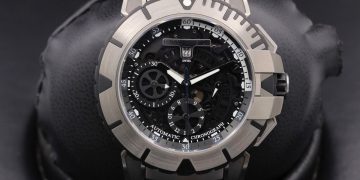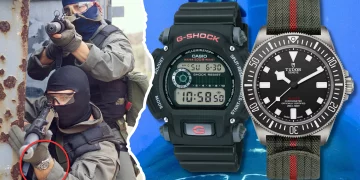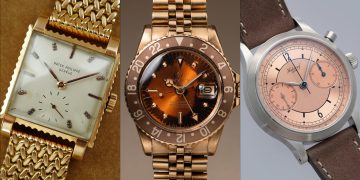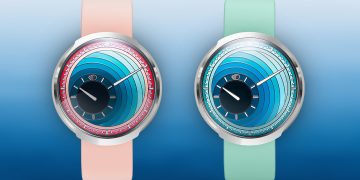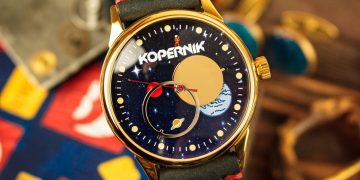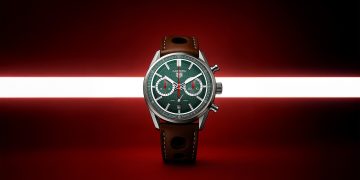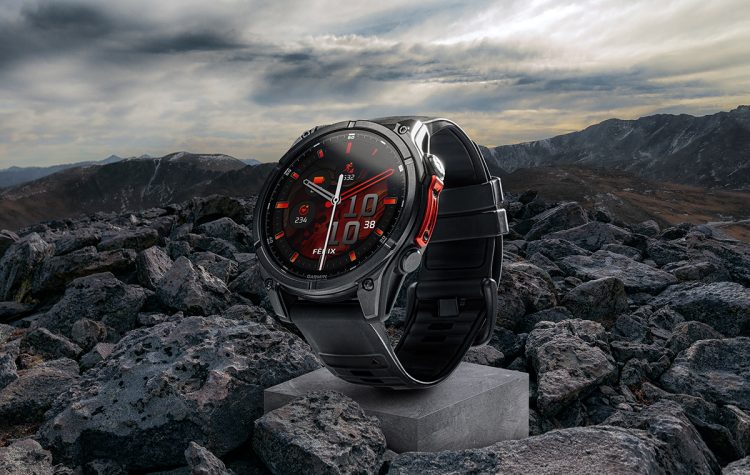Introduction: Garmin’s Legacy of Innovation and Technological Leadership
Garmin, a name synonymous with high-performance GPS systems and wearable tech, has been a pioneering force in the navigation and fitness tracking industries for over three decades. What began as a small company focused on providing GPS solutions for aviation and marine navigation has transformed into a multi-billion-dollar global brand, shaping how we use technology in our everyday lives, from fitness tracking to outdoor exploration.
This article takes an in-depth look at Garmin’s brand history, its evolution from humble beginnings to a global leader, and how it has shaped the world of wearable technology, fitness tracking, and GPS navigation.
The article explores the following aspects of Garmin’s journey:
- The founding and early years of Garmin
- The company’s growth into multiple industries
- The evolution of Garmin products, including aviation, marine, automotive, and wearable devices
- Garmin’s approach to innovation and how it has maintained its leadership position
- The company’s cultural and brand identity
- Garmin’s ongoing impact on fitness, health, and outdoor navigation industries
1. Garmin’s Founding and Early Years (1989-1999)
a. The Birth of Garmin
In 1989, Gary Burrell and Min Kao, both engineers with a passion for aviation and technology, founded Garmin Ltd. The company’s name is a combination of the two founders’ first names: Gar from Gary Burrell and Min from Min Kao. Garmin was born out of a shared vision to improve navigation through the use of Global Positioning System (GPS) technology, a relatively new technology at the time.
- Key Focus: Garmin’s early focus was on creating innovative aviation GPS systems that could help pilots navigate with more accuracy and ease. The GPS technology was a game-changer in aviation, providing pilots with real-time data on their position, heading, and altitude.
- First Major Breakthrough: In 1991, Garmin released the GPS 100, one of the first commercial GPS products available to the public. This breakthrough product was initially aimed at the aviation industry, offering better, more reliable navigation compared to traditional systems. The device was compact, easy to use, and offered better accuracy than previous systems.
b. Early Expansion into Other Industries
Garmin’s early success in aviation led the company to expand into marine navigation, where GPS technology was revolutionizing how sailors and boaters navigated. The company’s ability to create rugged, reliable GPS devices for the marine industry helped Garmin to quickly gain a reputation for being a leader in GPS technology.
- Marine GPS Systems: Garmin’s first marine GPS products were launched in the mid-1990s, and these devices became popular among both recreational and professional boaters. The company’s ability to offer affordable, easy-to-use GPS systems for marine use helped Garmin further establish itself as a global brand.
- Automotive Navigation: Garmin also ventured into the automotive industry, developing GPS navigation systems for cars, which quickly gained traction as GPS technology became increasingly popular for road trips and daily commuting. Garmin’s early car navigation systems were noted for their user-friendly interfaces and reliable performance.
2. The Rise of Garmin’s Wearable Technology (2000-2010)
a. Entering the Fitness and Outdoor Markets
Garmin’s expansion into fitness wearables began in the early 2000s when the company saw an opportunity to create GPS-enabled products for runners, cyclists, and outdoor adventurers. With a deep understanding of GPS and its applications in navigation, Garmin was well-positioned to develop fitness products that provided users with valuable metrics and performance data.
- Forerunner 101: In 2003, Garmin launched the Forerunner 101, one of the first GPS-enabled fitness watches. This product was revolutionary because it allowed runners to track their distance, pace, and location while training outdoors. The Forerunner 101 set the stage for the company’s future in the fitness tracking market.
- Fenix Series: In 2012, Garmin released the Fenix series, which was designed specifically for multisport athletes and outdoor adventurers. The Fenix series quickly became one of the company’s flagship products, offering not only GPS capabilities but also altimeters, compasses, and barometers, making it ideal for activities like mountaineering, trail running, and backpacking.
b. Integration of Smartwatch Features
As the smartwatch market began to grow in the late 2000s, Garmin realized the potential for combining GPS technology with advanced fitness tracking features. The company expanded its offerings to include smartwatches, which provided more than just fitness data—they also featured notifications, health tracking, and customization options.
- Garmin Connect: The introduction of the Garmin Connect platform in 2009 allowed users to sync their Garmin devices with a smartphone or computer to track, analyze, and share data. This move was instrumental in building Garmin’s ecosystem for fitness and health monitoring, offering a seamless experience across devices.
3. Garmin’s Innovations and Technological Advancements (2010-2020)
a. Focus on Innovation and Continued Expansion
During the 2010s, Garmin continued to expand its product lineup, investing heavily in technology and innovation. Garmin focused on enhancing GPS accuracy, battery life, and sensor technology, making its products even more reliable and versatile.
- Solar Charging Technology: In 2018, Garmin introduced the solar charging technology for some of its high-end models, such as the Fenix 6X Solar. This innovation allowed users to extend the battery life of their Garmin devices by harnessing the power of the sun.
- Garmin Pay: In 2017, Garmin introduced Garmin Pay, a contactless payment system built into its smartwatches. This added a new layer of functionality for Garmin wearables, enabling users to make payments directly from their watch without needing a smartphone or credit card.
- Advanced Health Metrics: Garmin’s wearables began to feature advanced health and wellness tracking, such as stress tracking, sleep monitoring, and heart rate variability. These features helped Garmin gain a foothold in the health tech sector and appeal to a broader audience.
b. Garmin’s Impact on Multisport Athletes and Outdoor Exploration
Throughout this period, Garmin solidified its reputation as a leader in multisport GPS watches. The company’s watches became essential tools for athletes in various sports, including triathlons, cycling, swimming, and running.
- Fenix 6 and Forerunner Series: Models like the Fenix 6 and Forerunner 945 became popular among serious athletes and outdoor enthusiasts due to their advanced features, including multisport modes, elevation tracking, and navigation tools.
- Garmin in Adventure Sports: Garmin’s GPS devices became a staple in adventure sports like mountaineering and trail running, thanks to their ability to track detailed maps, routes, and waypoints in remote locations.

4. Garmin’s Branding and Corporate Culture
a. Garmin’s Brand Identity
Garmin’s brand is built around the values of precision, durability, and adventure. The company has consistently marketed itself as a brand that empowers athletes, adventurers, and outdoor explorers to push their limits and explore the world around them with confidence.
- Slogan: Garmin’s slogan, “Beat Yesterday,” encapsulates the brand’s focus on helping users improve their performance each day, whether in fitness, sports, or exploration.
- User-Centric Design: Garmin has always placed a strong emphasis on user-friendly, intuitive design that allows customers to easily integrate its products into their active lifestyles.
b. Corporate Culture and Innovation
Garmin fosters a corporate culture centered around engineering excellence, innovation, and collaboration. The company prides itself on having a team of skilled engineers, designers, and researchers working together to create cutting-edge products that serve real-world needs.
- Innovation and R&D: Garmin invests heavily in research and development, constantly seeking to improve its products and create new features that will enhance the user experience.
- Global Expansion: Garmin has expanded its global footprint over the years, with major offices in the U.S., Europe, and Asia. Its international presence has helped Garmin reach millions of customers worldwide.
5. Garmin Today: A Leader in Wearables and GPS Technology
a. The Current Product Line
Garmin’s product lineup is more diverse than ever, offering everything from fitness trackers to smartwatches, GPS devices for cars and outdoor activities, and even specialized devices for golfers and swimmers.
- Fenix 7 Series: The Fenix 7 series is one of Garmin’s most advanced products to date, featuring solar charging, advanced health metrics, music storage, and multi-sport tracking capabilities. It has become a favorite among outdoor enthusiasts and athletes.
- Forerunner 955: The Forerunner 955 continues to be a top choice for serious runners and triathletes, offering detailed training tools, advanced GPS tracking, and the Garmin Coach training app.
b. Garmin’s Role in the Future of Fitness and Navigation
As wearable technology continues to evolve, Garmin is committed to expanding its reach in both the fitness and health markets. The company is focusing on AI integration, mental health tracking, and advanced data analytics to create more personalized and accurate experiences for users.
- AI and AR in Garmin Devices: The future may see artificial intelligence (AI) and augmented reality (AR) features integrated into Garmin products, offering real-time data analysis and immersive experiences for users.
- Mental Health Monitoring: Garmin is also exploring ways to track mental health, including stress levels, recovery, and sleep patterns, providing users with a more holistic view of their well-being.
Conclusion: Garmin’s Legacy and Future Outlook
Garmin’s journey from a small startup focused on aviation GPS to a global powerhouse in wearable technology and navigation systems is a testament to the company’s commitment to innovation, precision, and meeting the needs of its users. Through the years, Garmin has shaped industries, empowered athletes, and helped individuals navigate the world around them.
Looking forward, Garmin will continue to be a driving force in the wearable tech and GPS navigation industries, pushing the boundaries of what’s possible with cutting-edge technology, user-centric design, and a commitment to improving the lives of its customers.



